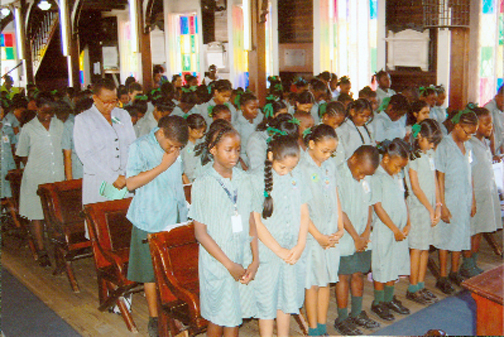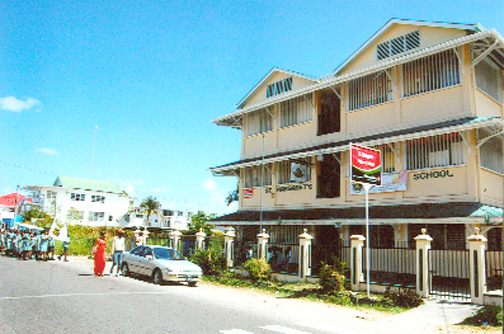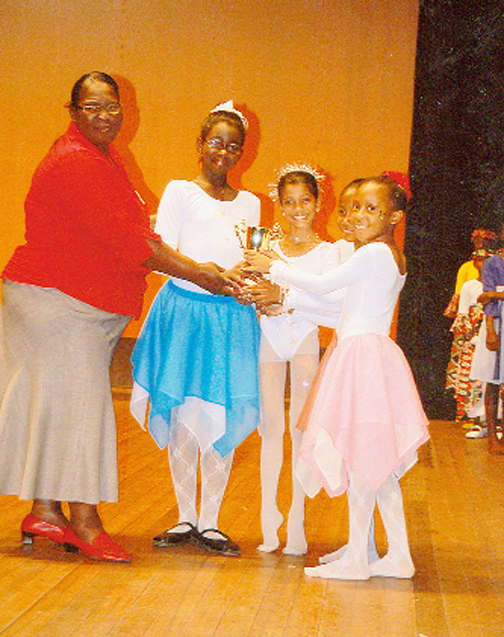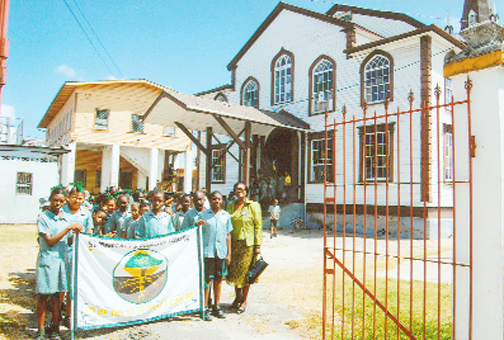After seventy-five years of high-quality teaching and outstanding results at national examinations, St Margaret’s Primary School continues the tradition of improving the social and academic performance of its charges as reflected in its motto ‘To Be The Best I Can Be.’

Considered one of the leading public primary schools today, St Margaret’s was founded in the year 1935 by the late Margaret Winifred Hunter and operated then as a private school.

Hunter laid the foundation of dedication and care to the children’s performance which teachers at the school today continue to foster.

The school was headed by Hunter up until 1981 and later became government managed under the Ministry of Education.
January marked the school’s 75th year in existence and in recognition of this, a series of activities were held in celebration. In school the activities included a spelling bee and best decorated classroom competitions and a games night with the Parent Teachers Association (PTA) body.
This was followed by poster exhibitions and clean-up activities.

A special anniversary church service at St Andrew’s Kirk followed by a road march through the streets of Georgetown on January 29 were among the highlights of the event.
Recently, Headmistress Borgette Charles and some of the school’s senior mistresses sat down with Stabroek News to share the experiences and challenges they had encountered while on the job.
St Margaret’s Primary today has a population of 841 pupils with 27 teachers. And while Charles admits that it can get challenging at times, “good team spirit and support get the work done,” she said.
Charles has been headmistress since 2005 but has taught at the school for 22 years.
She says the school strives to have its pupils placed in the top ten in the national examinations, a goal it has achieved since 1999.
Supporting Charles with the school’s mission is her deputy head, Georgiana Lewis, and other teachers who agreed that teaching had it highs and lows. As Senior Assistant Mistress Kathryn Persico pointed out, “working at the school is a very enjoyable experience but challenging because you have to be everything…”
This approach is taken because as the headmistress explained, “Education is not only academics. We try to make them fit for society.”
Charles admitted that the school did face some difficulty in carrying out its mandate. Of major concern to the teachers was the number of welfare-related situations that they had to deal with at school.
As one teacher said, it took away from the teaching. The teachers opined that there should be internal welfare placed in schools to deal with such situations.
Senior Mistress Salome Isaacs stated that teaching was sometimes interrupted and suggested that education officials could start with a cluster sample as it would save teachers valuable time.
Another challenge that teachers at the school face is a shortage of CD players for the Interactive Radio Instruction (IRI).
The school has a library and resource room, which came about as a result of a $1 million grant after the School Improvement Plan was approved.
The room is also equipped with a television and a DVD player and the Deputy Head said they were in the process of thinking of how it could be used to encourage more reading. Further, Charles said, they were working towards getting the school’s librarian on the government’s payroll. Currently, the librarian is being paid by the PTA.
The school is also seeking voluntary assistance since it is hoping to introduce computer classes to the pupils. At the moment the school has one computer but needs someone to work with the children.
And, while commending the National Feeding Programme that was implemented by the Ministry of Education, the teachers of St Margaret’s believed that it should have included all levels in schools.
The feeding programme only provides beverages and biscuits to pupils in Grades One and Two.
Meanwhile, the school’s Echo Environmental Club continues to prosper. The Environmental Community Health Organisation (ECHO) launched its ‘Schools in action against climate change’ programme at St Margaret’s in May of last year.
According to Lewis, the children had been learning to care for potted plants and the club had litter inspectors who were very active. Further, she said, the club visited the Skeldon Sugar Factory which was “quite educational.”
While the school did not have many clubs, pupils participated in activities like the Science Fair and Mashramani where they were very successful.
Overall, Charles said that the school tried its best with what it had and hoped that with community alliances, it could address some of its shortcomings. In the meantime, Charles was high in praise of the PTA, which she said was very supportive and vibrant.




